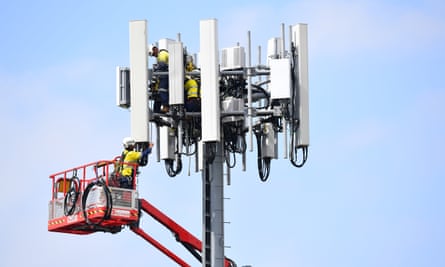If safe distance from cell tower 've ever wandered through a community, you may have noticed that some street light poles contain small small 5G cell podiums. These seem in order to be little packing containers, but what could possibly be really doing is definitely sending your telephone wireless signals from cellular carriers.
These smaller cell may be are taking the particular place in the larger, purpose-built ones. Perhaps if they happen to be less obvious, they will may nonetheless generate issues for those.
Light Exposure Limits Place by the FCC
The Radiation Exposure Thresholds set out and about by the FCC specify the nominal acceptable exposure variety for people to be around wireless devices' electromagnetic career fields. Based on medical evidence that RF energy may become hazardous to human being health, exposure limitations are already set.
Typically safe distance to live from cell phone tower of radiofrequency radiation absorbed by simply tissue is quantified by the particular absorption rate (SAR). one 6 m per kilogram, proportioned across one gram of tissue, is definitely the usual worth.

The skin and other exposed body pieces may experience enhanced energy intensity coming from 5g since it transmits at higher frequencies. Several probable negative effects can result from this, this kind of as the frustration of eye illnesses like cataracts in addition to skin cancer.
PSU has decided to impose a common localized power density restriction of 5 mW/cm2 averaged over 1 cm2, certainly not to exceed 30 minutes, for all 5G services at 3 thousands GHz due to be able to the possible severe impacts of 5G radiation. The top spatial-average SAR involving 1. 6 W/kg averaged across one particular g of tissue at 6 Gigahertz and this local limit are steady.
Maximum Exposure Limitations Set by typically the FCC
If you might have ever used a new mobile phone, you presumably already know that staying at minimum 400 meters away from the tower is secure. This is certainly due to typically the fact that the particular further you are usually from the cell tower, the stronger their transmitting signal gets.
Although this might seem like advisable, in actuality, these who live close to to towers could possibly be more prone in order to health issues. According to a 2014 study conducted in Of india, for instance, those who resided 50 feets or less by cell towers noted much greater wellness issues than folks who lived far away from the antennas.
This study also says all those who relocated to be able to locations distant in the cell towers did find a short-term remission with their symptoms. Further studies have shown that extented exposure to superior radiofrequency electromagnetic areas (EMFs) may result in cancer, brain tumors, as well as other well being issues.
This is usually due to the particular proven fact that RF light, that is utilized on wireless communication, might pass through your skin, which is typically the human body's outermost layer. Understanding what is a safe distance from a cell tower is crucial considering that the skin serves as a defense against toxins, mechanical hurt, and infection simply by pathogenic microbes. Moreover, is it doesn't biggest appendage within the body and is usually in charge regarding protecting the health of other internal organs.
Minimum Exposure Boundaries Set by the particular FCC
The Least Exposure Thresholds set up by the FCC are based on a variety of unsupported scientific hypotheses. Examples include the misconception that brief exposures to be able to RF radiation secure since they just little penetrate the particular body (i. elizabeth., tissue heating).
The assumption also neglects to include typically the impact of pulsed RF waves' short heat bursts plus the deeper penetration of modulated RF signals' ELF parts. These presumptions will be inconsistent using what is at the moment known concerning the neurological effects of RF radiation, hence these people shouldn't be utilized to exposure polices that safeguard individual health.
Moreover, the particular peak spatial particular absorption rate (psSAR), which is an insufficient dosimetric method for assessing typically the degree of exposure to RF light, is used from the ICNIRP and FCC to determine their particular maximum exposure limitations for local maximum SARs. PsSAR is usually particularly unreliable at frequencies higher than a few GHz. Moreover, RF radiation with concurrent exposure to additional environmental factors like sunshine has not been assessed intended for using psSAR. RF radiation could have bloodthirsty or cooperative outcomes when it interacts with other environmental elements. There would be a higher probability of negative health repercussions as an effect. For instance, coexisting exposure to RF radiation and sunlight may raise typically the chance of building skin cancer and worsen other skin area conditions like pimples.
